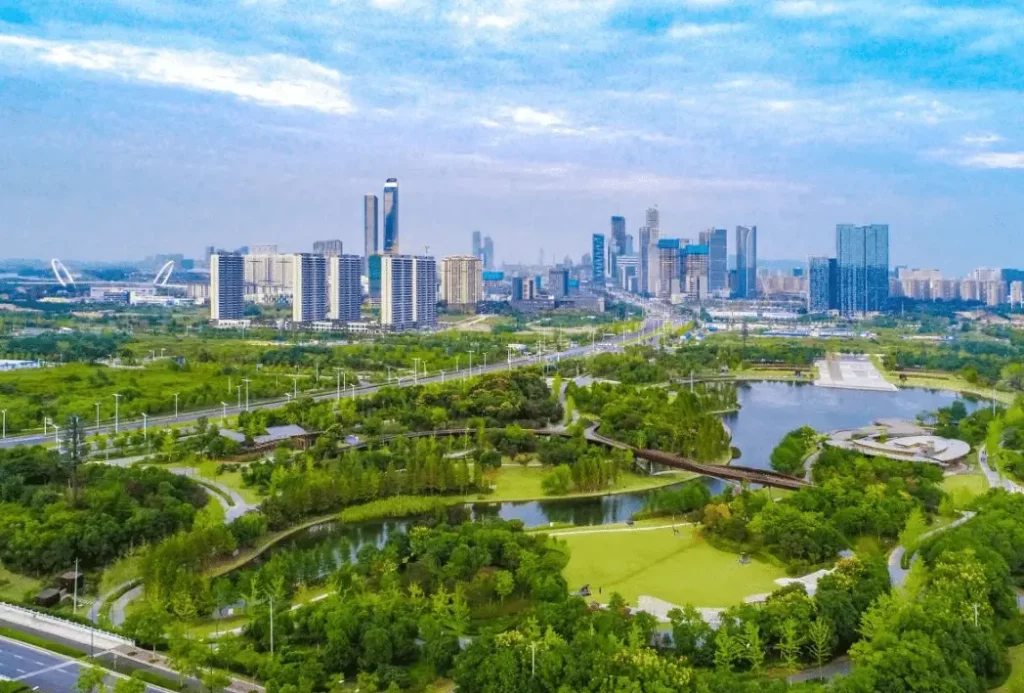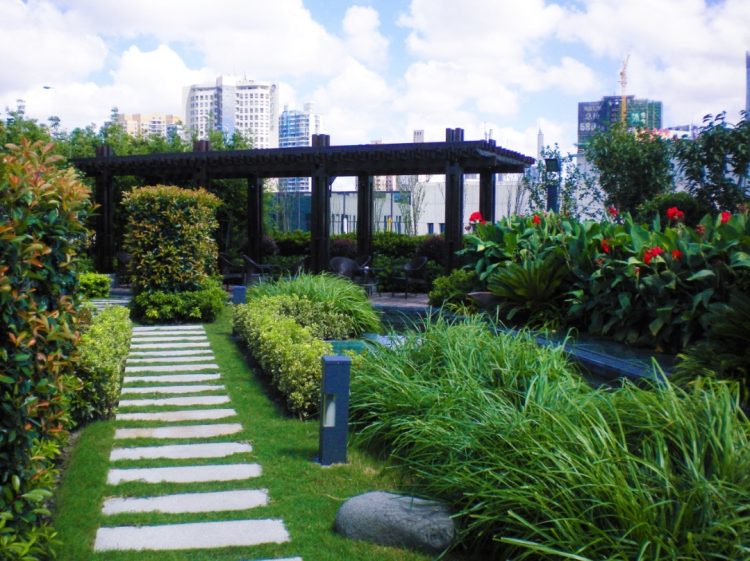As urbanization continues to rise globally, many communities face challenges related to crowded living spaces, pollution, and limited access to nature. However, recent studies and urban design initiatives have demonstrated that incorporating green spaces—such as parks, gardens, and green rooftops—into community environments can have profound and wide-ranging benefits for both physical and mental health. These spaces, often referred to as urban green spaces or green infrastructure, provide much more than aesthetic appeal; they contribute significantly to the well-being of residents in ways that extend far beyond their physical beauty.
In this article, we explore how green spaces in community environments positively affect residents’ health, particularly in urban settings where nature can sometimes seem scarce. From reducing stress to improving physical fitness, the benefits of green spaces are both measurable and substantial, making them a critical component of community planning and development.
1. Physical Health Benefits of Green Spaces
1.1. Encouraging Physical Activity
One of the most obvious benefits of green spaces is their ability to encourage physical activity. Access to parks and open spaces motivates residents to spend more time outdoors, whether they are walking, jogging, cycling, or engaging in recreational sports.
- Outdoor exercise: Studies have shown that individuals who live near parks or green spaces are more likely to engage in physical activities, such as walking, running, or cycling, which help to maintain or improve cardiovascular health, build muscle strength, and enhance overall fitness.
- Inclusive fitness: Green spaces often include areas designated for different types of exercise, such as playgrounds for children, fitness stations, walking trails, and cycling lanes. These facilities provide opportunities for people of all ages and fitness levels to stay active, which is crucial for maintaining a healthy lifestyle, especially in older adults.
1.2. Enhancing Air Quality
Urban environments are often plagued by air pollution, which can have detrimental effects on residents’ health, contributing to conditions like asthma, heart disease, and respiratory issues. Green spaces play a vital role in improving air quality, as plants and trees absorb carbon dioxide and release oxygen, thereby improving the overall air quality in urban areas.
- Reduction in pollutants: Trees and plants act as natural filters, removing pollutants like nitrogen dioxide, sulfur dioxide, and particulate matter from the air. This is particularly important for those with respiratory conditions, as clean air can reduce symptoms of asthma and allergies.
- Microclimate regulation: Green spaces also help moderate the microclimate, cooling the air through evapotranspiration (the process by which plants release water vapor). This cooling effect can reduce the urban heat island effect, which is caused by excessive concrete and asphalt in cities, and can help mitigate heat-related health risks.
1.3. Promoting Sleep Quality
A good night’s sleep is essential for physical health, and green spaces can improve sleep quality. Natural environments are linked to lower levels of cortisol, the stress hormone, which can enhance relaxation and contribute to better sleep.
- Stress reduction: Spending time in nature has been shown to reduce stress levels, making it easier to unwind at the end of the day. With reduced stress, residents may experience deeper, more restorative sleep, which is crucial for physical recovery and overall well-being.
- Improved circadian rhythm: Exposure to natural light during the day helps regulate the body’s internal clock (circadian rhythm), leading to better sleep patterns at night.
2. Mental Health Benefits of Green Spaces
2.1. Stress Reduction and Relaxation
Green spaces have long been associated with relaxation and stress relief. Research has shown that simply spending time in nature can lead to significant reductions in both mental fatigue and psychological stress.
- Nature as a stress reliever: Studies suggest that exposure to green spaces lowers the production of cortisol, the stress hormone, and promotes a sense of calm. The tranquil atmosphere in parks, gardens, and green walkways helps to counterbalance the anxiety-inducing effects of urban living, such as noise, traffic, and overcrowding.
- Mental restoration: Natural environments have restorative properties that help the brain recover from mental fatigue. A brief walk through a park or a few moments of sitting in a garden can significantly improve mood and mental clarity, enhancing residents’ ability to cope with the challenges of daily life.
2.2. Reducing Anxiety and Depression
Access to green spaces has been consistently linked to lower levels of depression and anxiety. These spaces offer a quiet, peaceful refuge that provides mental clarity and a reprieve from the stressors of urban life.
- Enhanced mood and reduced depression: Time spent in green spaces has been found to enhance mood and reduce the symptoms of depression. Engaging with nature has a calming effect, which can help to alleviate the feelings of sadness, hopelessness, and emotional numbness commonly associated with depression.
- Anxiety relief: Being in green spaces has also been shown to reduce anxiety levels, which is especially important in today’s fast-paced, high-pressure world. Natural environments help to create a sense of psychological safety and peacefulness, which are key in managing anxiety.
2.3. Improved Cognitive Functioning
Green spaces have also been shown to have a positive impact on cognitive function, particularly in children, older adults, and individuals with cognitive decline.
- Enhanced focus and attention: Studies have indicated that exposure to natural environments improves attention and concentration. This is particularly beneficial for children, who tend to perform better academically and socially when they have access to green spaces.
- Cognitive development: For older adults, spending time in green spaces can help reduce the risk of cognitive decline and diseases such as dementia. Engaging with nature helps stimulate brain activity, promoting better memory retention and problem-solving skills.
3. Social Benefits of Green Spaces
3.1. Fostering Social Interaction and Community Engagement
Green spaces provide opportunities for social interaction, which is vital for mental well-being. Parks and gardens are gathering points for people of all ages, backgrounds, and social groups. These spaces encourage informal socializing, whether it’s meeting a friend for a walk or attending a community event.
- Building social bonds: Green spaces act as communal spaces where individuals can meet, interact, and form new social connections. This social interaction helps combat loneliness and fosters a sense of community.
- Creating shared experiences: Public events like outdoor concerts, fitness classes, or gardening clubs can bring people together, allowing residents to share experiences and form stronger social ties. This sense of community is essential for mental health, as people who are connected to others are generally happier and more resilient.
3.2. Reducing Crime and Improving Safety
The presence of green spaces can also improve neighborhood safety. Studies have shown that areas with well-maintained green spaces tend to have lower levels of crime and violence, which can greatly benefit residents’ mental health.
- Increased social cohesion: Green spaces provide a natural setting for socializing and building relationships, which in turn fosters a greater sense of community. Stronger social networks contribute to social cohesion, which can help reduce crime and increase safety in neighborhoods.
- Deterring anti-social behavior: A vibrant, active green space, where people engage in physical activities and community events, tends to discourage criminal behavior. The more people are out in the open and visible, the less likely it is for illegal or anti-social activities to thrive.

4. Environmental Benefits of Green Spaces and Their Impact on Health
4.1. Eco-Therapy and Nature as Healing
The concept of eco-therapy—also known as nature-based therapy—suggests that spending time in nature can be an effective way to treat various mental health conditions. Green spaces provide a therapeutic environment for individuals to reconnect with nature and improve their psychological state.
- Nature as a natural healer: Time spent outdoors, surrounded by trees, plants, and wildlife, has been found to lower blood pressure, reduce heart rate, and even improve immune function. This connection to the natural world is often described as “biophilia”—a deep, intrinsic human connection to nature that benefits overall well-being.
- Healing spaces: Green spaces provide a healing environment for individuals dealing with trauma or emotional challenges. These spaces offer a peaceful sanctuary, where people can reflect, recover, and restore their mental balance.
4.2. Promoting Sustainability and Environmental Health
By creating green spaces, communities not only benefit from the direct physical and mental health advantages but also contribute to the broader health of the environment.
- Biodiversity: Green spaces help support local biodiversity by providing habitats for birds, insects, and other wildlife. This increases environmental awareness and encourages sustainable practices among residents.
- Sustainable design: Urban green spaces are often designed with sustainability in mind, using native plants and eco-friendly materials. This sustainable approach benefits both the residents and the environment by reducing carbon footprints and improving local ecosystems.
5. Conclusion: The Crucial Role of Green Spaces in Improving Health and Well-being
The benefits of green spaces in community environments are undeniable. From physical health improvements like enhanced fitness and air quality to mental health benefits such as stress reduction and cognitive stimulation, green spaces are essential for promoting overall well-being. Additionally, the social and environmental advantages they offer—such as fostering community interaction and supporting sustainable development—are equally important in creating healthier, more connected communities.
As urbanization continues to shape our world, it is crucial for city planners and policymakers to prioritize the creation and preservation of green spaces. By doing so, they can ensure that all residents have access to nature’s restorative powers, ultimately improving both their physical and mental health for generations to come.

















































